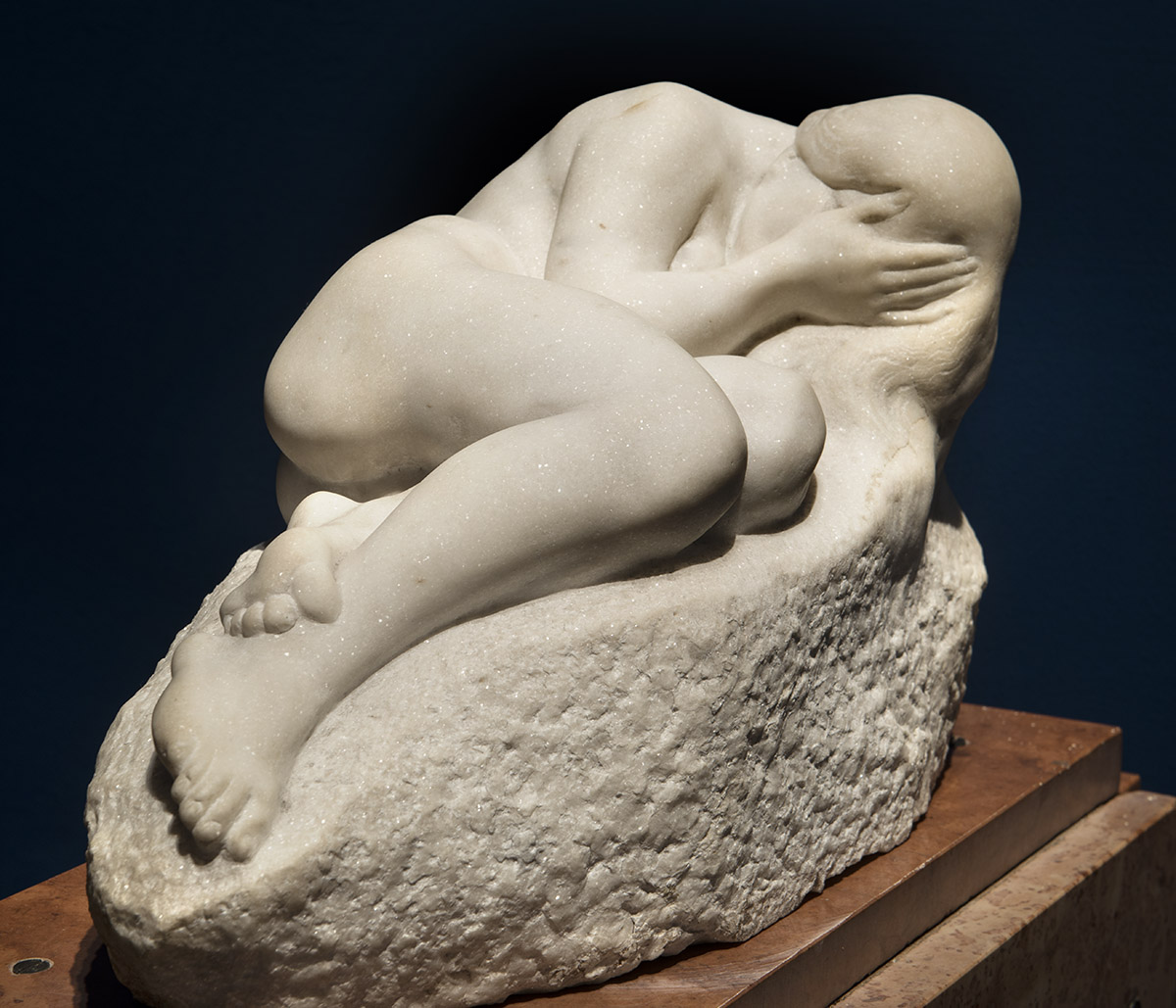V
Reclining Woman
SZŐDY Szilárd
1878, Nagykáta – 1939, Budapest
Reclining Woman
after 1907
Carrara marble
The artist carefully polished the body of the woman who crouches naked on a slightly sloping pedestal, with her hair undone and her face buried in her palms. By contrast, the pedestal is left roughly hewn, which lends emphasis to smoothness of the figure.
These characteristics first appeared in Auguste Rodin’s art. The French father of the style was a great source of influence for several of Szilárd Sződy’s works. The latter is incidentally known to have made another statue with a similar form, in which the woman does not hide her face, but gazes peacefully into the distance. Sződy’s is not the only oeuvre to include works in this vein: several more Hungarian sculptors at the time came to produce this type of statues, among them Dezső Lányi (1907), Zsigmond Kisfaludi Strobl (1908), the Finnish Yrjö Liipola (1907), who worked in Hungary, and Béla Pankotai Farkas (in whose case the piece cannot be dated with certainty; it was made before 1917). The statues of Sződy and the others have such a striking similarity in subject, appearance and modelling that they can probably all be traced back to the same model, Rodin’s Danaida (1889). The fact that four of these works were made either in 1907 or 1908 also suggests that their creators all encountered the inspiration at around the same time. Our exhibit also presents another work in this vein: Miklós Ligeti, who came to know Rodin’s art during his 1894 study trip to Paris, made Eve a decade earlier, in 1897.
